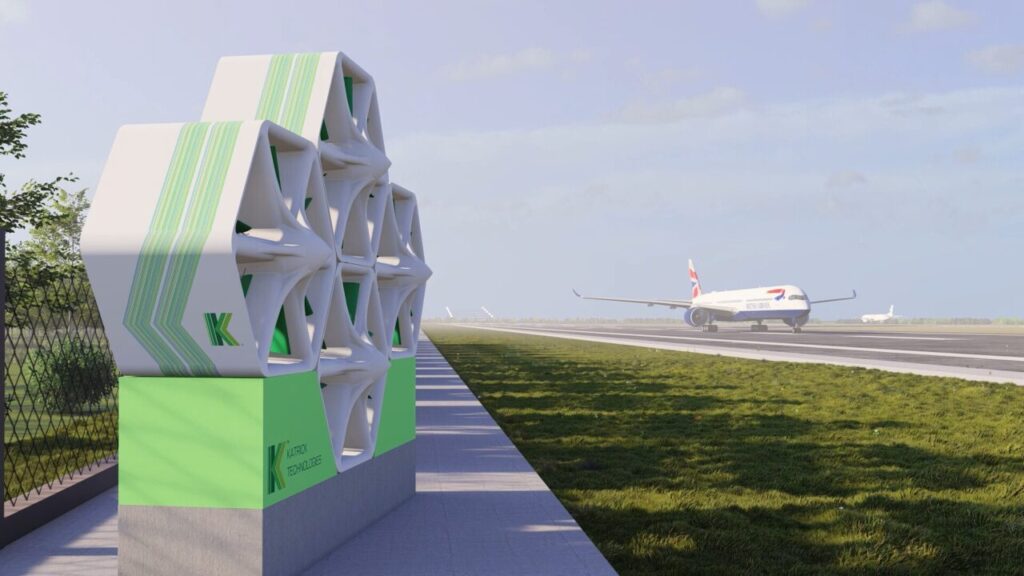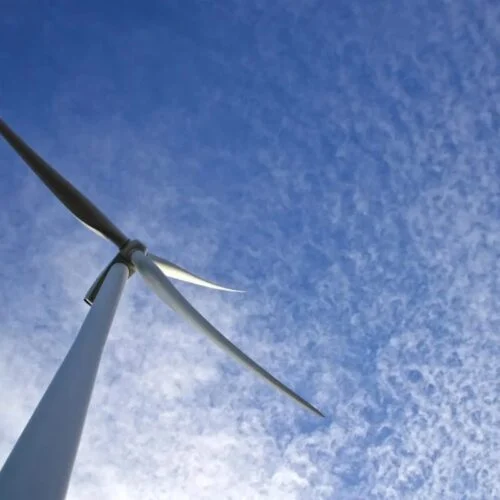German technology and engineering firm Bosch has partnered with Scottish green tech developer Katrick Technologies to install prototype wind ‘panels’ at Edinburgh Airport.
An 18-month trial is ongoing at Edinburgh Airport to identify where best to situate the panels, which capture energy as low-level winds pass through them. They are smaller than wind turbines, which are not suitable for airports, primarily due to fears around their potential interference with aircraft. Bosch will help industrialise and manufacture the prototype Wind Panels.
Katrick’s wind panels are made up of channelling ducts inside which are multi-layered, patented aerofoils—a material typically used in aircraft parts. They work independently from each other to maximise energy capture, converting it into mechanical oscillations which are converted to energy. Katrick explained to Current± that each individual hexagon (as seen in the image above) has a rated capacity of 1kW and can deliver up to 2,190kWh per year.
When first introduced, the prototype model will be easily visible to passengers so that the technology can be seen in action. Edinburgh Airport has a stated intention to look at creative and innovative ways to generate sustainable energy as part of its Greater Good sustainability strategy.
Edinburgh Airport’s chief technical officer said: “For the last 18-months we’ve been looking at how viable this solution would be for our business, and we believe it could have a significant impact as we continue on our path to net zero.
“As we make progress on our sustainability strategy it is important we work closely with other Scottish businesses, and this collaboration with Katrick Technologies shows Scotland is at the forefront of developing innovative solutions to the creation of green energy.”
Airport sustainability in the UK
In 2022, Edinburgh Airport signed a deal with AMPYR Solar Europe (ASE) to develop a 9MW ground-mounted solar PV system and a 1.5MW battery energy storage system, agreeing a long-term power purchase agreement (PPA) with ASE that meets up to 25% of the airport’s energy needs.
Typically, due to the unsuitability of wind turbines, airports look to solar as a means to supply renewable energy throughout their buildings and operations. Our sister site, Solar Power Portal previously reported that solar was providing London Southend Airport with 25% of its annual energy consumption in a bid to reduce its carbon footprint.
Bristol Airport started work in 2023 on a 2.8-acre solar farm, which, combined with roof-mounted panels at its Administration Building and the Car Rental Consolidation Site, could generate at least 16% of the airport’s direct energy needs over the year.
SSE Energy Solutions, the commercial retail subsidiary of SSE, is developing a solar power project at Teesside Airport with a potential capacity of 50MW. Meanwhile, in November Farnborough Airport in Hampshire completed a £2 million rooftop solar PV project courtesy of solar installer Solivus, which will generate 1.2GWh of renewable energy per year and supply up to 25% of the airport’s annual electricity needs.






